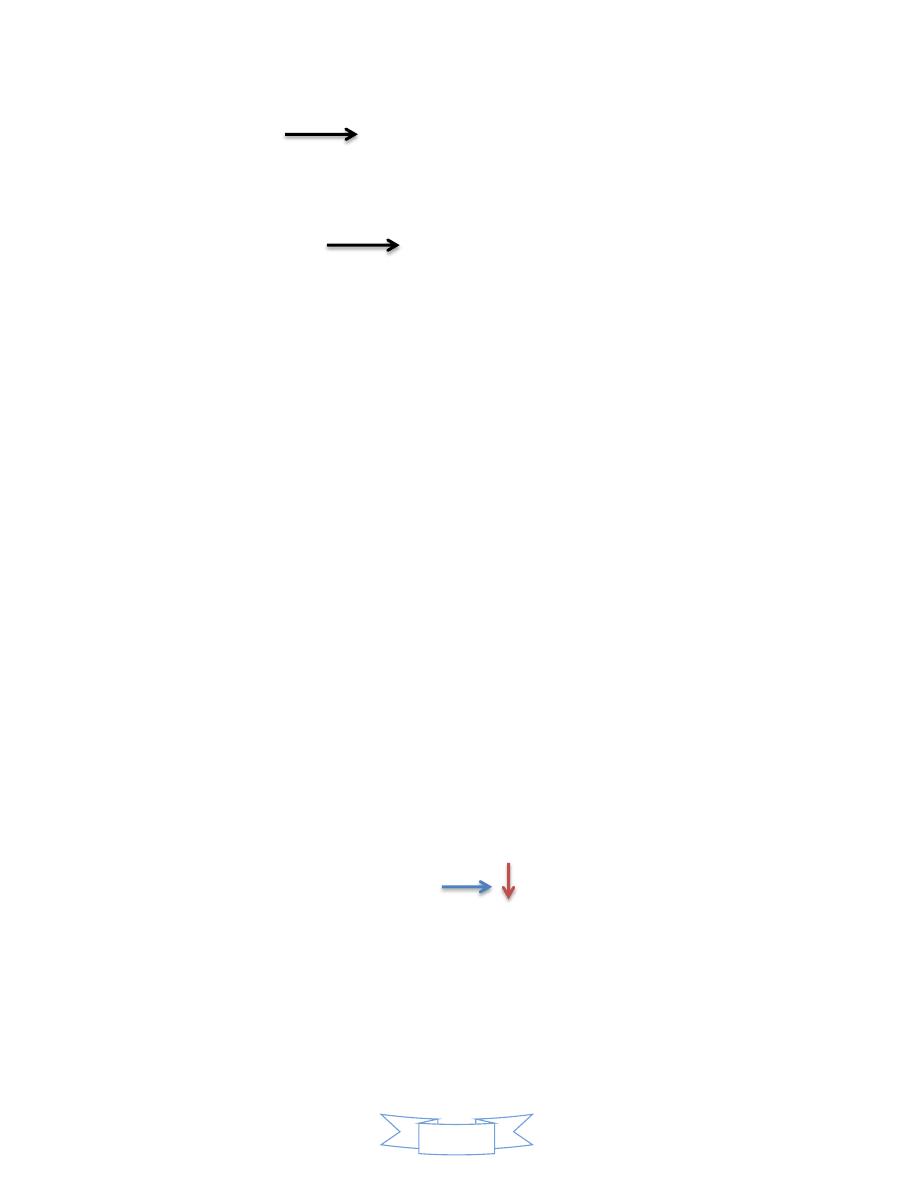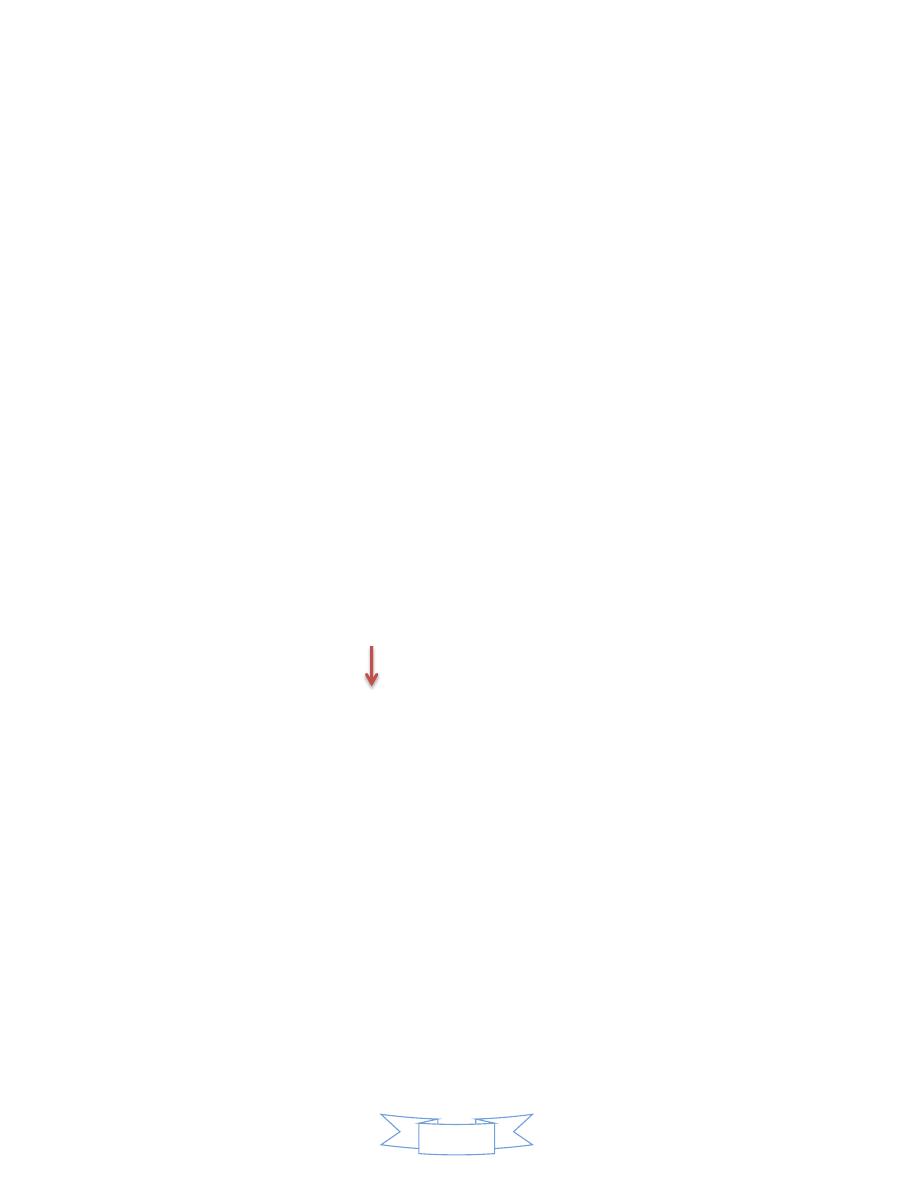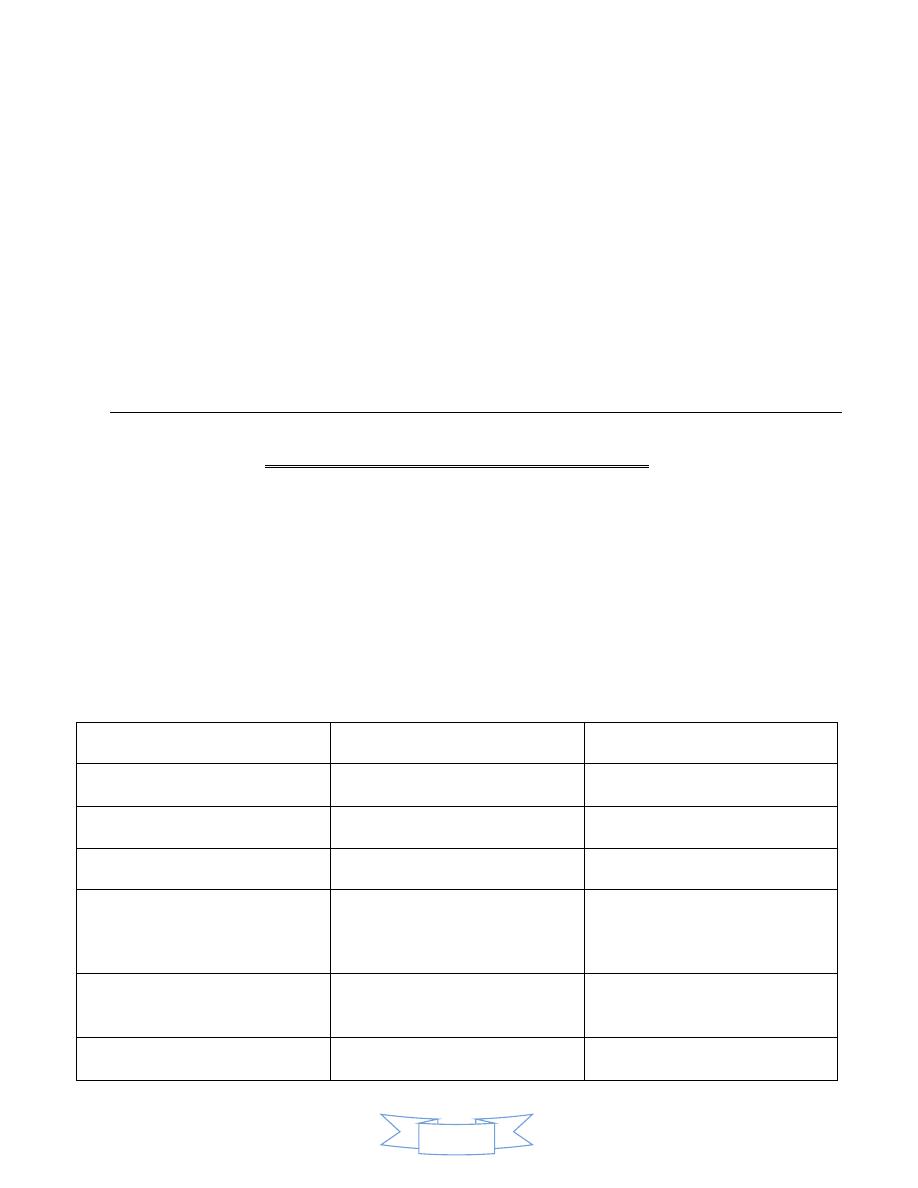
1
PHARMACOLOGY
Pharmacology: is the science that is study the action of drugs on the
body.
Pharmacology divides into two parts:
1. Pharmacodynamic: is the science that is study the action of
drugs on the body, which includes the dose, mechanism of the
action toxic effects.
2. Pharmacokinetic: is the science that is study the action of the
body on the drugs, which includes absorption, distribution,
metabolism, excretion.
Origin of drugs:
1. Plant: atropine.
2. Animal: insulin.
3. Synthetic: amoxicillin.
4. Semisynthetic: cephalosporin.
5. Microbiology: penicillin.

2
Effects of drugs:
1. Side effect: predicted undesired of the therapeutic e.g.
Diphenhydramine HCL.
2. Adverse effect: unpredicted undesired of the therapeutic e.g.
penicillin.
3. Toxic effects: damage t the components of the cell.
Posology: is the science that is study the dose of the drugs.
Drug: any substance or any chemicals, it causes damage in the
function or organ, it uses as prophylactic or uses as treat
acetaminophen or uses as diagnosis.
Note: the definition of drug has no clean-cut demarcation.
How the drugs are named:
1. Trade name (proprietary , innovator): drugs that are marked by
name from the company, and it is written with a capital letters
e.g. : PARACETAMOL, ASPIN, INDOCID.
2. Science name (official): it is written with a small letters and it is
less complex than the chemical name e.g. : aspirin,
acetaminophen, indomethacin.

3
3. Chemical name: it is deal with chemical structure e.g. : N-
acetyl-para-aminophenol, acetyl salicylic acid, indole acetic
acid.
Properties of an ideal drugs:
1. Effectiveness: effect more to the organisms and effect less to
living tissue (host).
2. Safety: it has less toxic effects.
3. Selectivity: it works only on its given:
a) Adrenalin: it works on α and β receptors.
b) Salbutamol: it works only on β
2
receptor.
Receptor: it’s a specific site on the cell or inside the cell, its protein
in nature, it’s affected by many drugs when attachment on it.
Types of receptors:
1. Membranous: α and β receptors; muscarine, nicotine.
2. Inside the cell: steroidal H. , glucocorticoid, estrogen, thyroid H.
Kinds of receptors: protein, enzyme, RNA, DNA.
Absorption: transfer of the drug from the site of administration to
the blood stream it depends on the rate and extend of the drug.

4
Bioavailability(Bio.): it’s the rate and extend of the drug that is reach
to systemic circulation e.g. Bio. of X drug is 70% that is mean the
drug is absorbed by 70% and excreted by 30%.
Note: elimination includes metabolism and excretion.
Some drugs are lipid soluble so it’s blood brain barrier, and some
drugs are water soluble .
The absorption:
1. Transport of drugs from GIT by passive or simple diffusion and
active transport.
2. PH has effect on absorption.
3. Most of drugs are weak acid and weak base.
Physical factors on absorption:
1. Blood flow.
2. Total surface area.
Distribution: transport of drugs to different parts of the body.
Note: drug leaves the blood stream and enters into the extracellular
fluid or enters the cells of tissues.

5
It depends on:
1. Blood flow:
a) Central compartment: it includes highly vascular organs, and
rich blood vessels (it has more blood perfusion) e.g. liver,
kidney, heart, spleen.
b) Peripheral compartment: it includes less vascular organs, and
poor blood vessels (it has less blood perfusion) e.g. skeletal,
connective tissue, adipose tissue, interstitial tissue.
2. Capillary permeability: it’s capillary structure.
3. Binding of drug to protein: albumin, fibrinogen, globulin,
ceruloplasmine, and transferrin.
4. Presence of storage depot.
Metabolism: change of the drug from lipid to soluble to be easily
eliminated.
Phase (1): it includes oxidation, reduction and hydrolysis.
Phase (2): conjugation.
Note: oxidation takes place in the liver (endoplasmic reticulum).

6
Factors effect drug oxidation:
1. Age.
2. Species variation.
3. Diseases.
4. Enzyme induction.
5. Enzyme inhibition.
6. Starvation.
7. Dose and route of administration.
Reduction: includes chloramphenicol.
Hydrolysis: procaine, xylocaine.
Conjugation: glucuronic acid, sulfide acid, acetylation, amino acid.
Excretion: remove of the drugs to outside of the body e.g. hepatic
route through the bile, lung by gas exchange, lactation through
milk, skin sweat glands, saliva through the intestine.
Affinity: tendency of drug to combine with specific kind of receptor.
Effinity: ability of the drug after binding with receptor to activate
the receptor.

7
Agonist: when drug binding with receptor and give action e.g.
muscarine + ACH action.
Antagonist: drug binding with receptor with no activation e.g.
muscarine + atropine no active.
Types of drug antagonism:
1. Physiological: when 2 substances act on 2 different receptors
e.g. histamine(bronchoconstriction),
adrenalin(bronchodilitation).
2. Chemical: chemical reactions occur between 2 substances to
produce inactive or insoluble substances e.g. sodium carbonate.
3. Physical: heparin.
4. Pharmacological: a) Competitive (reversible).
b)Noncompetitive (irreversible).
Drug interaction: one dug interact or interfere with the action of
another drug e.g. :
Anti-acid with oral tetracycline the action of tetracycline
due to delay the absorption of tetracycline into the blood stream.

8
The drug drug interaction can produce effects called:
1. Addition (additive effect): 1+1=2
2. Summation: 1+1=3
3. Potentiation(synergistic): 1+1=4
4. Antagonism: 1+1=0
Additive effect: combine of two drugs is equal to the summation e.g.:
propoxyphene + aspirin = added analgesic effect.
Synergistic: combine of two drugs is greater than the summation
e.g.: codeine + aspirin = greater analgesic effect.
Antagonistic effect: one drug interfere with the action of another
drug the result is decrease the effect of another drug e.g.:
tetracycline + anti-acid = the absorption of tetracycline.
Drug food interaction: interact of the food with drugs e.g.:
tetracycline + dairy products.
Notes:
Some drug take on empty stomach, it’s absorbed more quickly
into blood stream than be taking with food, and it’s benefit than
giving it with food due to it gives an optimal effect e.g.: captopril.

9
Drugs that should take with an empty stomach are took (1 or 2)
hours before meal.
Drugs that cause irritation to stomach and cause epigastric
distress (nausea, vomiting), the best way is give them with food to
decrease the gastric distress e.g. : NSAIDs, salicylate.
NSAID: non steroidal anti inflammatory drug.
Other drugs like tetracycline combine with food like milk (dairy
products) the dug will be unabsorbable, or no pharmacological
effects and the result will be toxic and cause therapeutic failure.
Factors effect on the movement of the drugs in the body:
1. Size of drug.
2. Lipids.
3. Degree of ionization: a)Aspirin = 3.5pka
b)Ascorbic acid = 11.5pka
c)Diazepam = 3pka
d)Atropine = 10pka

10
Factors effect on drug absorption:
1. Drug solubility.
2. Route of drug administration.
3. States of G.I.T.
4. Variation of species.
5. Drug interaction.
6. Blood circulation.
A.N.S. pharmacology
Receptors: 1. Muscarinic (smooth m.), nicotinic (skeletal m.)
(Parasympathetic).
2.
α
1
(blood)
,
α
2
(C.N.S.)
,
β
1
(heart)
,
β
2
(bronchus)
(Sympathetic).
Effector organ
Cholinergic effect
Adrenergic effect
Eye
Constriction of pupil of eye Dilitation of pupil of eye
Heart
Decrease heart rate Increase heart rate
Bronchus
Bronchoconstriction Bronchodilitation
Increase secretion &
motility of G.I.T.
Decrease secretion &
motility of G.I.T.
Smooth muscle
Constriction of smooth m.
of urinary bladder
Dilitation of smooth m. of
urinary bladder
Salivary gland
Increase secretion
Decrease secretion
G.I.T.

11
Cholinergic agonist:
1. Directly: acetylcholine, carbachol, pilocarpine.
2. Indirectly: neostigmine, physostigmine, edrophonium,
pyridostigmine, distigmine.
Acetylcholine: neurotransmitter of parasympathetic & cholinergic
nerves, therapeutically it’s not important because it’s rapid
inactivation by an enzyme called (acetylcholine esterase), and it’s
not stabile in lab and room temperature.
Carbacol: neuromuscular purgative (make diarrhea), & decrease
intraocular pressure.
Pilocarpine: drug of choice for glycoma for emergency cases it
decreases intraocular pressure.
Physostigmin: for glycoma ( pilocarpine is more effect), increases
G.I.T. motility and bladder.
Neostigmine: increases G.I.T. motility and bladder, myasthenigravis.
Edrophonium: like neostigmine, short duration action (10-20)
minutes.
Pyridostigmine: like edrophonium.

12
Distigmine: myasthenigravis, urinary retention.
Cholinergic antagonist:
1. Antimuscarinic: Atropine, Lpratropine, and Scopolamine
(Hyoscine),(Hyosciamine).
2. Ganglionic blocker: Nicotine, Trimethophan.
Atropine: it’s antimuscarinic agent, it’s alkaloid and it extracts from
atropabelladona, it works as competitive antagonism to ACH:
atropine + SO4 = atropine sulphate.
Therapeutic uses of atropine:
1. Ophthalmic examination, use atropine or homotropine.
2. Antispasmodic action, to relax the G.I.T. & urinary bladder.
3. Anti-dose to remove the over dose of insecticide.
4. To block the action of cholinergic ACH.
5. Anti-secretory to decrease secretion of saliva before surgical
operations and it’s called (preanesthetic drug).
6. Renal and biliary colic.

13
Toxicity of atropine:
1. Dry mouth.
2. Blurred vision.
3. Techy cardia & constipation.
4. Hallucination.
Scopolamine: it has antispasmodic action, it removes the pain in
smooth muscle, it uses as antiemetic(vomiting) and it controls t
motion sickness.
Adrenergic agonist:
1. Direct: Adrenaline, Dopamine, and Phenylephrine.
2. Indirect: Amphetamine, Tyramine.
3. Direct & indirect: Ephedrine.
Therapeutic uses of adrenaline:
1. For bronchial asthma.
2. For glycoma, the adrenaline decrease intraocular pressure.
3. For anaphylactic shock.
4. It combines with local anesthesia (xylocaine) to control blood
oozing at the site of injury, use it by dentist in extraction of
teeth.

14
Adversed effects of adrenalin:
1. C.N.S. disturbance.
2. Cerebral hemorrhage.
3. Cardiac arthma.
Dopamine: it uses with fluids, cardiogenic shock and heart failure.
Phenylephrine: it uses topically as a nasal decongestant, dilatation
of pupil, and relief pain.
Naphazoline: nasal decongestant.
Amphetamine:
Therapeutic uses of Amphetamine :
1. C.N.S. stimulant.
2. For hyper activity in small age.
3. Treatment of hypertension.
4. For control of appetite.
Side effects of amphetamine:
1. Addiction.
2. C.N.S. stimulant.

15
Ephedrine: uses:
1. For asthma.
2. Nasal decongestant.
3. C.N.S. stimulant.
Adrenergic antagonist:
1. α - blocker: Doxazocin, parazocine, phenoxybenzamine,
terazosin.
2. β – blocker: Propranolol(Inderal), atenolol(Tenormin),
labetalol, nadolol, tinolol.
Propranolol: Hypertension, glycoma, migrate headache,
hyperthyroidism.
Adversed effect of propranolol is arrhythmia.
Atenolol: for hypertension, and control blood pressure.
Xylazine: it inhibits nor epinephrine release.
Mechanism of action:
It deceases the synthesis of nor epinephrine from nerve endings, so
it causes C.N.S. depression.

16
Clinical uses:
1. Sedation.
2. Analgesic.
3. Muscle relaxant.
4. For hypertension.
Yohymbine: C.N.S stimulant.
Doputamine: for weak heart, prevent heart block.
Salbutamol: bronchial asthma.
Reserpine: decrease the synthesis of nor epinephrine, used for
hypertension
